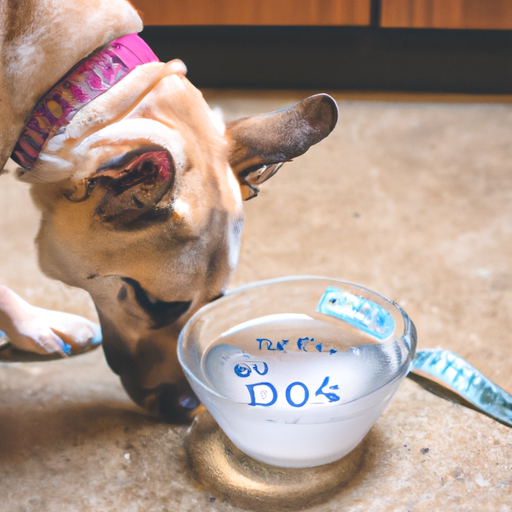Understanding Your Dog’s Hydration Needs
Just like you, your furry friend needs water to survive and thrive. But, how much water? That’s where things get a bit tricky. Your dog’s water intake depends on several factors such as their size, age, and activity level.
- Size: Larger dogs tend to need more water than smaller ones.
- Age: Puppies generally need about half a cup of water every two hours.
- Activity Level: Active dogs need more water than less active dogs.
You should aim to provide at least one ounce of water per pound of body weight every day.
The Importance of Hydration in Dogs
Hydration plays a key role in your dog’s health. It aids in digestion, nutrient absorption, and waste removal. Dehydration, on the other hand, can lead to serious health issues, such as kidney and liver problems.
Here are some signs your dog might be dehydrated:
- Dry or sticky gums
- Sunken eyes
- Loss of skin elasticity
The Dangers of Over-Hydration
While it’s important to keep your dog hydrated, be careful not to overdo it. Over-hydration, or water intoxication, can lead to a dangerous drop in electrolyte levels, potentially causing seizures and even death.
How to Encourage Your Dog to Drink More Water
If you find your dog isn’t drinking enough water, here are a few strategies:
- Make water readily available: Ensure clean, fresh water is always accessible.
- Try flavored water: Add a splash of low-sodium chicken broth to the water.
- Use wet food: Wet dog food has high water content and can supplement hydration.
| Strategy | Pros | Cons |
|---|---|---|
| Readily Available Water | Easy, No Cost | May Not Be Sufficient |
| Flavored Water | Tasty, Encourages Drinking | Extra Calories |
| Wet Food | Nutritious, Hydrating | More Expensive |
FAQ
Q: Can I give my dog too much water?
A: Yes, over-hydration can be dangerous for dogs.
Q: How can I tell if my dog is dehydrated?
A: Look for signs such as dry gums, sunken eyes, and loss of skin elasticity.
Q: What if my dog refuses to drink water?
A: Try flavoring the water with a bit of low-sodium chicken broth or switch to wet food.
Remember, as a caregiver, it’s your responsibility to ensure your dog stays hydrated. Be observant, be patient, and consult with your vet if you have any concerns.



